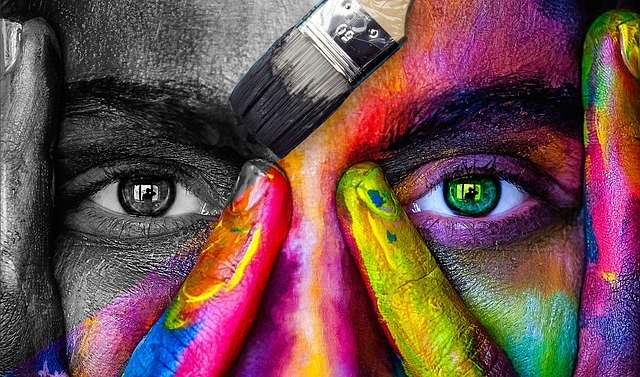|
‘How is that human systems seem so naturally to gravitate away from their humanness, so that we find ourselves constantly needing to pull them back again?’ (Jenny Cave-Jones) What a profound insight and question. How is that, in organisations, the human so often becomes alien? Images from the Terminator come to mind – an apocalyptic vision of machines that turn violently against the humans that created them. I was invited to meet with the leadership team of a non-governmental organisation (NGO) in East Africa that, in its earnest desire to ensure a positive impact in the lives of the poor, had built a bureaucratic infrastructure that, paradoxically, drained its life and resources away from the poor. The challenge and solution were to rediscover the human. I worked with a global NGO that determined to strengthen its accountability to its funders. It introduced sophisticated log frames and complex reporting mechanisms for its partners in the field, intended to ensure value for its supporters and tangible, measurable evidence of positive impact for people and communities. As an unintended consequence, field staff spent inordinate amounts of time away from their intended beneficiaries, completing forms to satisfy what felt, for them, like the insatiable demands of a machine. The challenge and solution were to rediscover the human. A high school in the UK invited me to help its leaders manage its new performance process which had run into difficulties. Its primary focus had been on policies, systems and forms – intended positively to ensure fairness and consistency – yet had left staff feeling alienated, frustrated and demoralised. We shifted the focus towards deeper spiritual-existential questions of hopes, values and agency then worked with groups to prioritise high quality and meaningful relationships and conversations over forms, meetings and procedures. The challenge and solution were to rediscover the human. Academics and managers at a university for the poor in South-East Asia had competing roles and priorities, and this had created significant tensions as well as affected adversely the learning experience of its students. The parties had attempted unsuccessfully to resolve these issues by political-structural means; jostling behind the scenes for positions of hierarchical influence and power. They invited me in and we conducted an appreciative inquiry together, focusing on shared hopes, deep values, fresh vision and a co-created future. The challenge and solution were to rediscover the human. Where have you seen or experienced a drift away from the human? Curious to discover how I can help? Get in touch!
22 Comments
‘The question is: how to ensure a healthy life-life, work-work and life-work balance?’ It felt like losing the plot. Spinning plates isn’t unusual or new yet, as a freelancer, the tell-tale signs were beginning to show. I met with my coach, Sue, to re-ground myself and my work before, like some scene from a Greek wedding, plates began to fall and smash in pieces around me. Sue asked me, ‘If you were to conduct an appraisal of your life and work for the past 12 months, what would the highlights be? How would you rate your life and business health and performance?’ My mind immediately went blank. I had allowed myself to become so busy that the year was a total blur. So, I sat down that evening, took out my diary and created a simple summary. I discovered to my surprise that I had worked with people from 150 organisations (charities; NGOs; churches; public sector, e.g. social services, health, education, police); from 35 countries; 60 coaching sessions; 30 training workshops; 25 action learning set meetings; written 25 articles and blogs; provided ad hoc TESOL support for refugees and asylum seekers; and, by God’s amazing grace and the generosity of family and friends, sent £23k in support to the poorest and most vulnerable in the Philippines. Strikingly, until I did this review, I had no idea. I had lost sight and sense of the wood in the midst of the trees. So, Sue asked me next what I enjoy most about this kind of work-life that I choose to live. I responded, ‘A sense of purpose as a follower of Jesus – and freedom.’ She came straight back with a challenge: ‘Where, for you, is the boundary between freedom and chaos?’ That hit the nail on the head, hard. Freedom is, for me, tied up closely with choice. I was at risk of becoming reactive, falling backwards. I needed to regain my balance, my grounded stance, to be truly free to choose again. Sue offered a suggestion. ‘How would it be if you were to set aside periodic ‘Creating Freedom’ days in your diary – to do those things (apart from your work) that you find life-giving and will help keep you grounded; or that will drain away your life and perspective if you don’t do them?’ That was a great insight and idea. That evening, I marked out spaces in my calendar for silent prayer, physical exercise, time with family and friends, holiday breaks; and for doing the headache-inducing financial and administrative parts of my life-work that I would otherwise procrastinate over or subtly avoid. That was my confession and solution. How do you ensure a healthy sense of purpose, perspective and priority in your own life and work? Feedback – a topic that often keeps people awake at night. There’s something I want to say, perhaps need to say, but I can’t think of the right way to put it. ‘What if it provokes a negative response?’ ‘What if I can’t handle the person’s reaction?’ ‘What if it makes things even worse?’ Such questions can understandably create an anxious psychological, emotional and physical state. If I’m feeling anxious, no matter what carefully-crafted words I may use, the other person is likely to pick it up intuitively and it could, to them, look and feel like attack or defence: and evoke the same in them. The truth is, we are continually giving and receiving feedback, yet often out of conscious awareness. Our tone of voice, body language, use of words and behaviour all convey implicit messages and we only have limited rational control over them. What is more, we filter and interpret signals we receive from others based on our own personal experience; including our hopes, expectations and fears. Feedback always takes place in a dynamically-complex and fluid relational (e.g. affinity; trust; hierarchy) and cultural (e.g. language; values; norms) context – and that influences everything. Take, for instance, feedback that lands positively on one day, yet could feel negative on another, depending on how I’m feeling. If I like and trust the person, I’m more likely to hear and respond to it positively. Conversely, if trust is low, of if we’ve just had a bruising argument, it could evoke a negative reaction; even if the feedback itself is valid and fair. In light of this, we are most likely to give and receive feedback successfully if we pay attention to our psychological, emotional, physical and relational state first, and then give equal attention to that of the other person too. We can do the former in a number of ways. Take a moment to relax, breathe (pray) and imagine the person and conversation. How am I feeling? Is now the best time to hold this conversation? What will I need to handle it well? What beliefs am I carrying? What am I saying to myself? If: ‘What if it goes wrong?’, what happens if I reframe it to, ‘What if this goes well?’ If I’m saying, ‘I want this person to stop what they’re doing’, what happens if I change it to, ‘I want this person to succeed’? Now rehearse the opening of the conversation – in a positive, relaxed state. We can do the latter part in a number of ways too. Invite the person into a constructive review conversation together, not simply impose something onto them. Be clear about your (positive) intention, purpose and desired outcome. Ask them where and when would suit them best. Frame the conversation in an appreciative, solutions-focused way, reminding them of the vision and goals and inviting their reflections first: e.g. ‘What is going well?’ and ‘What will make it even better?’ – before offering your own feedback and ideas. Close with, ‘How shall we move this forward?’ Do you lose sleep over giving or receiving feedback and how to do it well? If so, get in touch! ‘Good is the enemy of great.’ (Jim Collins) When we look out for great qualities, talent or performance; when we attempt to codify great competencies and to recruit, develop or retain them; we need to ask ourselves seriously: ‘Great - in relation to what?’ An existential view reframes everything. If shifts our attention from, say, ‘How can we make this more profitable?’ to ‘How can we make this more purposeful?’ or, ‘What is my career trajectory?’ to ‘What is my calling?’ Good is the enemy of great? Yes, if by ‘good’ we mean mediocre, a failure to reach a true, positive potential. No, if by ‘good’ we mean those ethical-spiritual values that call us back to who and what really matter most. How do good and great feature in your life and work, and those of your clients – and how do you/they manage the relationship between them? ‘Will not conform.’ (Christian Biker) Misfit. Outsider. Square peg in a round hole. Rocks the boat. Shakes the tree. Breaks the mould. You may have worked with one. You may be one. There are different types of deviance; configured around, 'acceptance or rejection of cultural values and goals' on the one hand and, 'acceptance or rejection of conventional ways to achieve them' on the other (Robert Merton). This means that, if you consider me disruptive, it’s likely to be because I challenge what you want and/or do, and/or how you do it. A deviant person can feel very uncomfortable to be around, unsettling as a colleague and difficult to manage. The answer to the question, ‘Is he or she a good fit?’ will be a resounding, ‘No’. A deviant person is a testing stone that reveals a contrasting norm; and he/she may galvanise a sense of shared identity and purpose among those who do fit: ‘We are X, not Y’. An oft-unquestioned assumption is that the defiant-dissident should change to fit in, and not that prevailing goals or culture should change. Yet constructive divergence can be a critical catalyst for transformation: ‘I’m proud to be maladjusted’ (Martin Luther King); ‘Well-behaved women rarely make history’ (Eleanor Roosevelt). Performance enhancers look for positive deviants that display exceptional qualities, then seek to replicate them. Psychological coaches help people to learn from their positive deviant experiences: ‘when the problem isn’t a problem’ (Mark Tyrrell). Radical leaders invite positive deviance to innovate, to break through. How deviant is your thinking and practice? How do you enable positive deviance in others? If at first you don't succeed? 'Try to hide your astonishment.' (Harry Banks); 'Hide all the evidence that you ever tried!' (Billy Collins) There are things we can do, and there are things we are willing to do; and there is a great deal of difference between the two. I could be, for instance, capable of doing a particular job well but have absolutely no commitment to do so. I could, conversely, throw myself wholeheartedly into a job that I’m hopelessly incompetent at. If we like grids, we can draw two axes with can do/can’t do as one polarity, and willing to do/not-willing to do as the other. It makes a great, simple tool to use in e.g. recruitment and selection; performance management and development; talent and career planning. I worked with an organisation that used ‘ready, willing and able’ as a core talent management tool; a variation of a standard performance vs potential matrix. Ready meant ‘can do’ (as above) and able meant ‘wider life and work circumstances-permitting’. It opened up some valuable and creative conversations when leaders and team members met to compare and contrast insights, aspirations and ideas on possible ways forward. The ‘able’ dimension also drew broader cultural, contextual and systemic factors into the frame: influences that lay beyond individual can-do and will-do alone. In my experience, the ‘will-do’ dimension, which incorporates e.g. motivation, determination and perseverance, often proves vital. It taps into beliefs, values and character and sifts out, ‘I would love to do this, in principle’, from, ‘I am willing to do whatever it takes (within legal-ethical boundaries) to succeed.’ It’s also the aspect that many leadership, recruitment, coaching and training conversations pay least attention to; assuming that e.g. goals, experience, qualifications, knowledge and skills are enough. How do you ensure traction? How do you test, nurture and help sustain the critical ‘will’? Are you an agent of hope - or of fear? It’s a stark choice. Faced with challenges that look and feel insurmountable, it’s easy to fall into fear. Some avoid fear by closing their eyes tightly, holding their breath, sticking their fingers in their ears and singing, ‘La la la’, hoping it will go away. Some try to avoid the situations, the relationships, the circumstances that evoke their fears. It sometimes works, but not often. Our fears have an annoying way of stalking and haunting us, tracking us down.
And so it is so often with those we lead, coach, train or facilitate in groups. What message do we model, communicate, inspire in others? I walked through fire last week. Well, on burning embers anyway. It was a charity fundraising event and I volunteered. In preparation beforehand, a trainer tested our fears in order to build resilience. We did all sorts of strange activities to overcome our inhibitions, culminating in breaking boards with bare hands and snapping an arrow end-on with my throat(!) Weird stuff. But it worked. The Firewalk was easy after that. It’s the same as exposure therapy: a gradual exposure to things we fear most in order to overcome our anxiety by facing them head-on and by doing them, not just thinking about them. Have you heard of P = P – I? Performance = Potential – Interference, based on Tim Gallwey’s Inner Game. Interference can be external or internal. Internal includes our fears of failure, of rejection, of humiliation, of getting it wrong. So I’m intrigued by how often e.g. God in the Bible says, ‘Don’t be afraid’. There’s a deep spiritual, existential dimension to this. Who or what do we place our trust in, our confidence in? What enables us to muster courage, to take a stance, in the face of our fears? There’s a psychological dimension to this too. How far do we take a breath, reveal our anxieties, take a risk, take courageous steps forward in the face of fear - to build the belief and hope in others that they can do the same? When teams are under pressure, e.g. dealing with critical issues, sensitive topics or working to tight deadlines, tensions can emerge that lead to conversations getting stuck. Stuck-ness between two or more people most commonly occurs when at least one party’s underlying needs are not being met, or a goal that is important to them feels blocked.
The most obvious signs or stuck-ness are conversations that feel deadlocked, ping-pong back and forth without making progress or go round and round in circles. Both parties may state and restate their views or positions, wishing the other would really hear. If unresolved, responses may include anger/frustration (fight) or disengagement/withdrawal (flight). If such situations occur, a simple four step process can make a positive difference, releasing the stuck-ness to move things forward. It can feel hard to do in practice, however, if caught up in the drama and the tense feelings that ensue! I’ve found that jotting down questions as an aide memoire can help, especially if stuck-ness is a repeating pattern. 1. Observation. (‘What’s going on?’). This stage involves metaphorically (or literally) stepping back from the interaction to notice and comment non-judgementally on what’s happening. E.g. ‘We’re both stating our positions but seem a bit stuck’. ‘We seem to be talking at cross purposes.’ 2. Awareness. (‘What’s going on for me?’). This stage involves tuning into my own experience, owning and articulating it, without projecting onto the other person. E.g. ‘I feel frustrated’. ‘I’m starting to feel defensive.’ ‘I’m struggling to understand where you are coming from.’ ‘I’m feeling unheard.’ 3. Inquiry. (‘What’s going on for you?’). This stage involves inquiring of the other person in an open spirit, with a genuine, empathetic, desire to hear. E.g. ‘How are you feeling?’ ‘What are you wanting that you are not receiving?’ ‘What’s important to you in this?’ ‘What do you want me to hear?’ 4. Action. ('What will move us forward?’) This stage involves making requests or suggestions that will help move the conversation forward together. E.g. ‘This is where I would like to get to…’ ‘It would help me if you would be willing to…’. ‘What do you need from me?’ ‘How about if we try…’ Shifting the focus of a conversation from content to dynamics in this way can create opportunity to surface different felt priorities, perspectives or experiences that otherwise remain hidden. It can allow a breathing space, an opportunity to re-establish contact with each other. It can build understanding, develop trust and accelerate the process of achieving results. What are your favourite coaching questions? I often use 3 that I’ve found can create a remarkable shift in awareness, insight and practice, especially in team coaching. I’ve applied them using variations in language and adapted them to different client issues, opportunities and challenges. They draw on principles from psychodynamic, Gestalt and solutions-focused coaching and are particularly helpful when a client or team feels stuck, unable to find a way forward.
* ‘What’s your contribution to what you are experiencing?’ * ‘What do you need, to contribute your best?’ * ‘What would it take..?’ Client: ‘These meetings feel so boring! I always leave feeling drained rather than energised.’ Coach: ‘What’s your contribution to what you are experiencing?’ Client: ‘Excuse me?’ Coach: ‘What do you do when you feel bored?’ Client: ‘I drift away, look out of the window.’ Coach: ‘What might be the impact on the wider group when you drift away?’ Client: ‘I guess others may disengage too.’ Coach: ‘How does the meeting feel when people disengage?’ Client: 'Hmmm…boring!’ Coach: ‘What do you need to contribute your best?’ Client: ‘It would help certainly if we could negotiate and agree the agenda beforehand, rather than focus on things that feel irrelevant.’ Coach: ‘So you want to ensure the agenda feels relevant to you. What else?’ Client: ‘If we could meet off site and break for coffee from time to time, that would feel more energising.’ Coach: ‘So venue and breaks make a difference too. Anything else?’ Client: ‘No, that’s it.’ Client: ‘I don’t think I can influence where and how these meetings are held.’ Coach: ‘It sounds like you feel quite powerless. How would you rate your level of influence on a scale of 1-10?’ Client: ‘Around 3’. Coach: ‘What would it take to move it up to a 6 or 7?’ Client: ‘I guess if I showed more support in the meetings, the leader may be more open to my suggestions.’ Coach: ‘What else would it take?’ Client: ‘I could work on building my relationship with the leader outside of meetings too.’ These type of questions can help a client grow in awareness of the interplay between intrapersonal, interpersonal and group dynamics, his or her impact within a wider system, what he or she needs to perform well and how to influence the system itself. They can also shift a person or team from mental, emotional and physical passivity to active, optimistic engagement. What are your favourite coaching questions? How have you used them and what happened as a result? It was an energising experience, facilitating a group of leaders this week who are keen to build a new high performing team. We pushed the boundaries of normal ways of working to stimulate innovative ideas in all aspects of the team’s work. We used photos to create an agenda and physically enacted people’s aspirations to avoid falling into conventional patterns of heady, rational conversation. It felt very different to meeting ‘because that’s what we do’. There was a different dynamic, energy and momentum. Participants leaned actively into the conversation, not leaning back in passivity or boredom. Yet it can be a real challenge to break free from tradition, from norms that trap a team in ways of doing things that feel familiar and safe but, deep down, lack inspiration or effectiveness. In our meetings, how often do we pause before diving into the agenda to ask, ‘What’s the most important thing we should be focusing on?’, ‘How are we feeling about this?’, ‘What is distracting us or holding our attention?’, ‘What could be the most creative and inspiring way to approach this?’, ‘What do we each need, here and now, to bring our best to this?’, ‘What would be a great result?’ So I presented a simple model to the team with four words: content (what), process (how) and relationship (who) encircled around goal (where). In all my experience of working with individuals and teams, whether in coaching, training or facilitation, whether in the UK or overseas, these four factors are key recurring themes that make a very real difference. They seem to be important factors that, if we get them right, make a positive impact. They lead to people feeling energised, more alive, more motivated and engaged. Conversely, if we get them wrong, they leave people frustrated, drained of energy, bored or disengaged. Worse still, if left unaddressed, they can lead to negative, destructive conflict that completely debilitates a team. We can use a simple appreciative inquiry to reflect on this.‘Think back to your best experience of working with another person or team. How did you feel at the time?’, ‘Think back to a specific example of when you felt like that with the person or team. Where were you at the time? What were you doing? What were they doing? What made the biggest positive difference for you?’ One of the things we notice when asking such questions is that different things motivate and energise different people. That is, of course, one of the tricky parts of leading any team. So a next question to pose could be something like, ‘What would it take for this team to feel more like that, more of the time for you?’ and to see what the wider team is willing to accommodate or negotiate. Now back to the model with some sample prompts to check out and navigate with a client, group or team. Notice how the different areas overlap and impact on each other. It’s about addressing all areas, not just to one or two in isolation. However, having explored each area in whatever way or level suits your situation, you are free to focus your efforts on those that need special attention. Goal: ‘What’s your vision for this?’, ‘Why this, why now?’, ‘What are you hoping for?’, ‘What would make a great outcome for you?’, ‘What would be the benefits of achieving it or the costs of not achieving it?’, ‘Who or what else is impacted by it and how?, ‘Where would you like to get to by the end of this conversation?’, ‘An hour from now, what would have made this worthwhile?’ Content: ‘What’s the most important issue to focus this time on?’, ‘What is the best use of our time together?’, ‘What is the issue from your perspective?’, ‘How clear are you about what this issue entails?’, ‘What feelings is this issue evoking for you?’, ‘What do we need to take into account as we work on this together?’, ‘Do we have the right information and expertise to do this?’ Process: ‘How would you like to do this?’, ‘What approach would you find most inspiring?’, ‘What might be the best way to approach this given the time available?’, ‘Which aspects to we need to address first before moving onto others?’, ‘What would be best to do now and what could be best done outside of this meeting?’, ‘Could we try a new way that would lift our energy levels?’ Relationship: ‘What’s important to you in this?’, ‘What underlying values does this touch on for you?’, ‘How are you impacted?’, ‘How are you feeling?’, ‘What are you noticing from your unique perspective?’, ‘What distinctive contribution could you bring?’, ‘What is working well in the team’s relationships?’, ‘What is creating tension?’, ‘How could we resolve conflicting differences?’ The versatility of the model is that it can be reapplied to coaching, training and other contexts too. In a training environment you could consider, for instance, ‘What are we here to learn?’ (goal), ‘What material should we cover?’ (content), ‘What methods will suit different learning styles?’ (process) and ‘How can we help people work together well in this environment?' (relationship). In a coaching context it could look something like, ‘How do you hope to develop through engaging in this coaching experience?’ (goal), ‘What issues, challenges or opportunities would you like to focus on?’ (content), ‘How would you like to approach this together?’ (process) and ‘What would build and sustain trust as we work on these things together?’ (relationship). I’d be interested to hear from you. Do the areas represented in this model resonate with your own experiences? Which factors have you noticed tend to be most attended to or ignored? Do you have any real-life, practical examples of how you have addressed these factors and what happened as a result? In your experience, what other factors make the biggest difference? |
Nick WrightI'm a psychological coach, trainer and OD consultant. Curious to discover how can I help you? Get in touch! Like what you read? Simply enter your email address below to receive regular blog updates!
|










 RSS Feed
RSS Feed